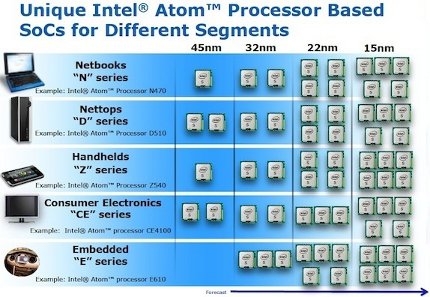For years, commentators have suggested that we are approaching the limits of how small chip components can be made before we hit a technological and physical limit. However, it looks like Intel has pushed the boundaries back a little further, as it revealed plans to develop its Atom CPUs on a 15nm process.
For comparison, the company's current generation low-power SoCs are built on a 45nm process. Shrinking the same architecture to 15nm would allow the chip to fit in a significantly smaller area while producing a higher performance-per-watt.
It also gets much closer to molecular levels - a single carbon atom is somewhere around 0.2-0.3nm in diameter, or about 50 times smaller than the planned components.

Of course, we have some way to go before we get to these minuscule chips. Intel fellow Raj Yavatkar explained to audiences at IDF that it will move to 32nm and 22nm manufacturing-processes in the coming years - showing that Moore's law is still alive and well.
While the company is already making some 32nm CPUs and has been thinking about 22nm designs for some time, there hasn't been much talk about the future beyond this. As chips get smaller, quantum effects - specifically tunnelling, which essentially means that electrons have a chance of passing through materials - start to become much more of an issue. At this point manufacturers need start to start designing chips in a different way to try and overcome these issues.
However, it seems that Intel believes that it can overcome the technological hurdles associated with a 15nm process. This means that the miniaturisation of CPUs can continue for at least a few more generations.













